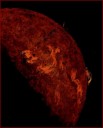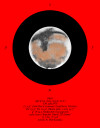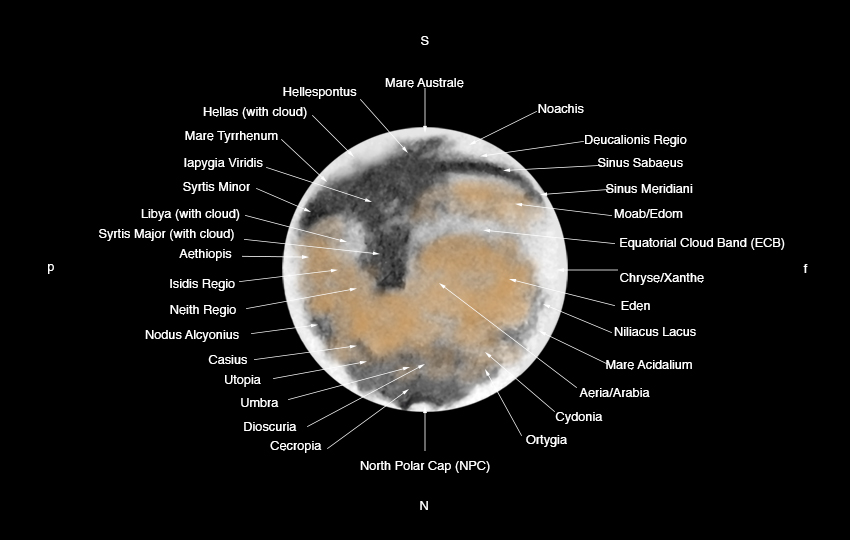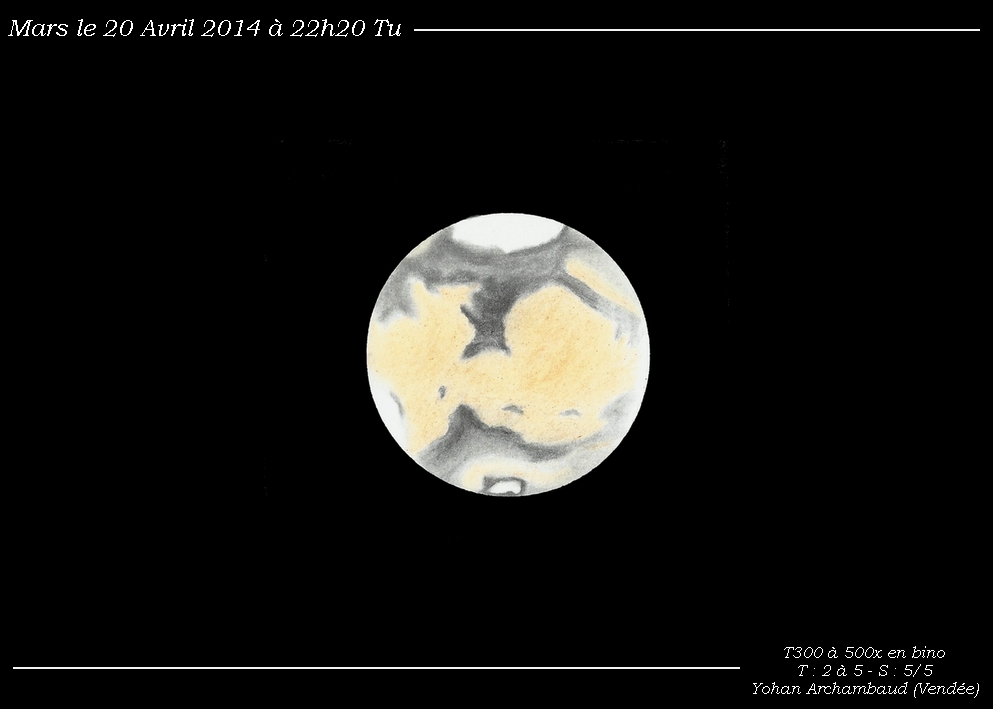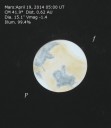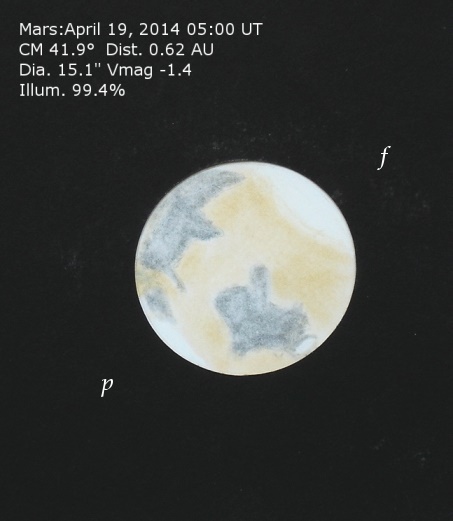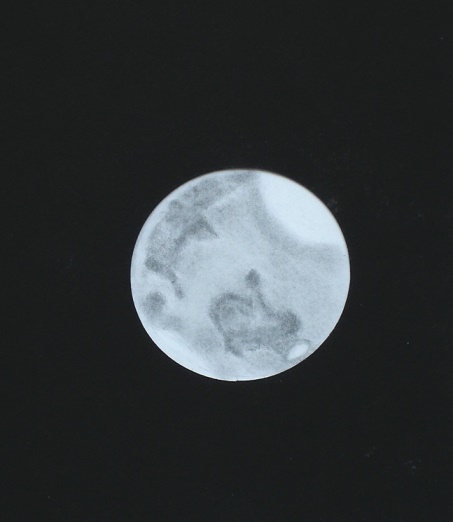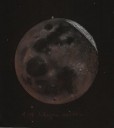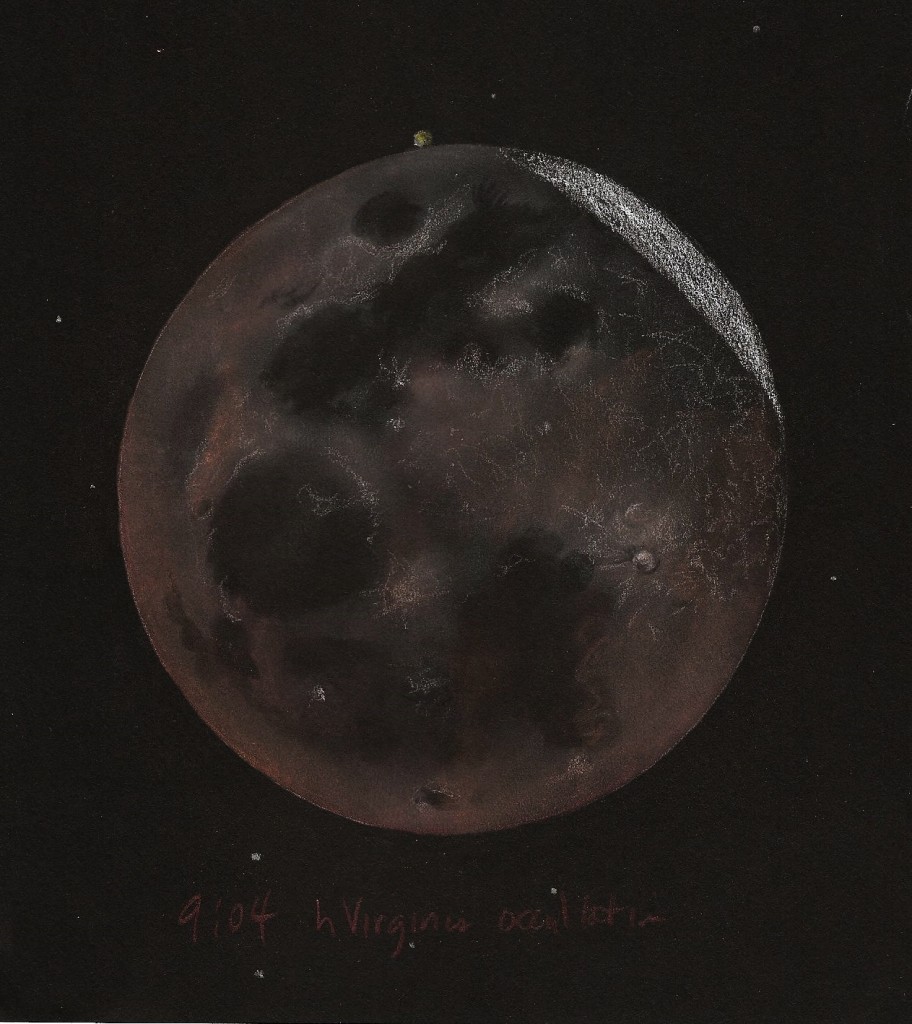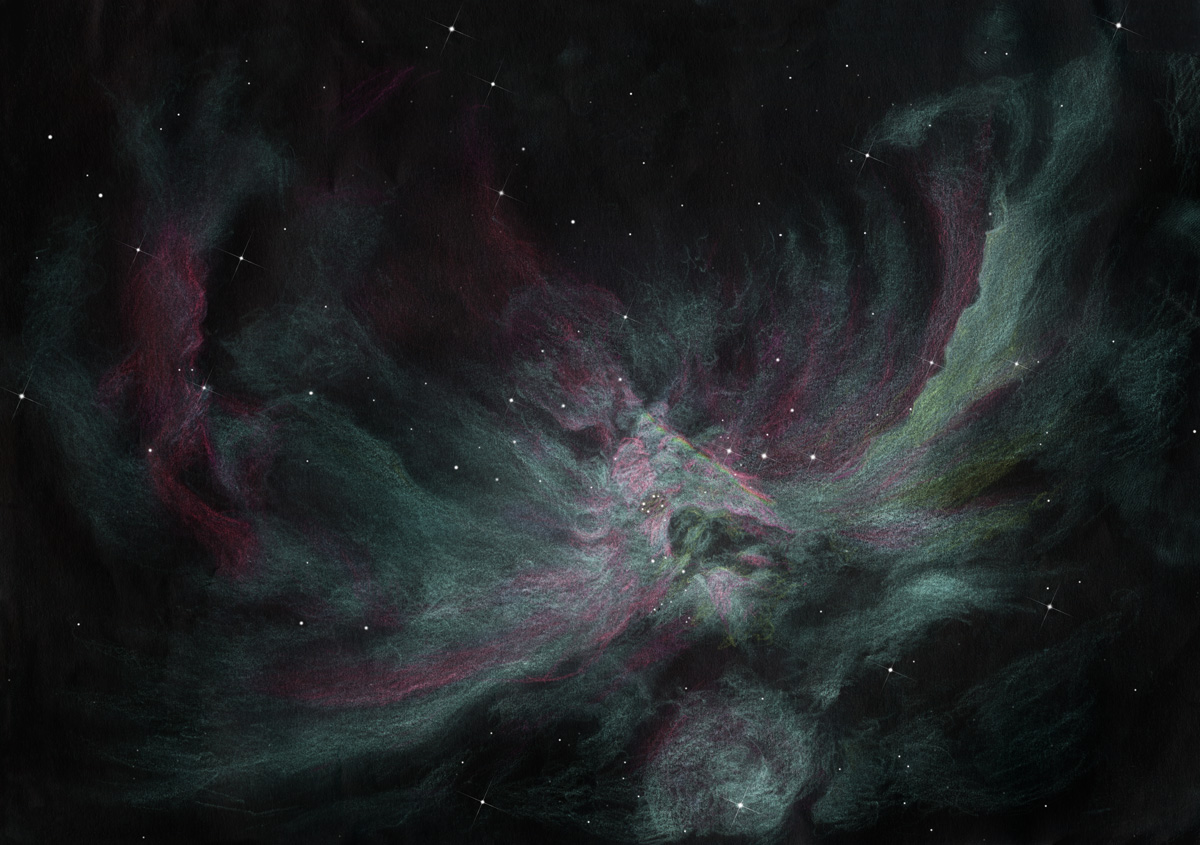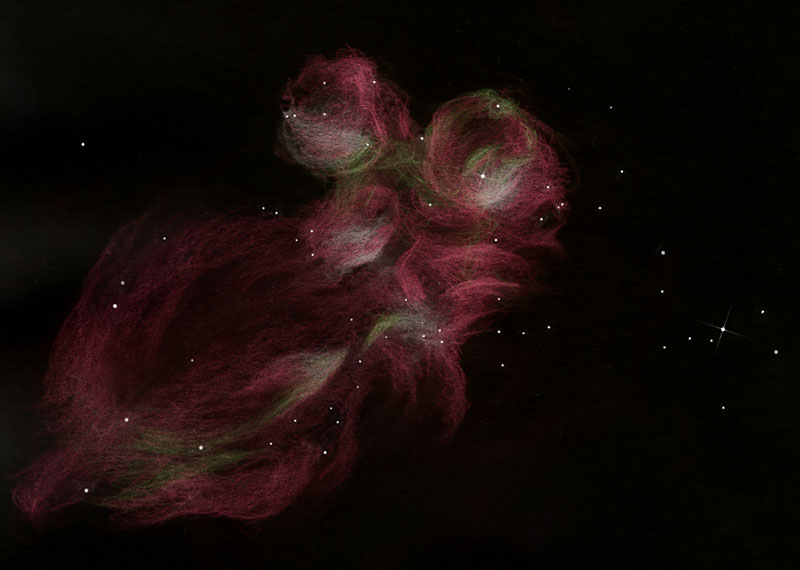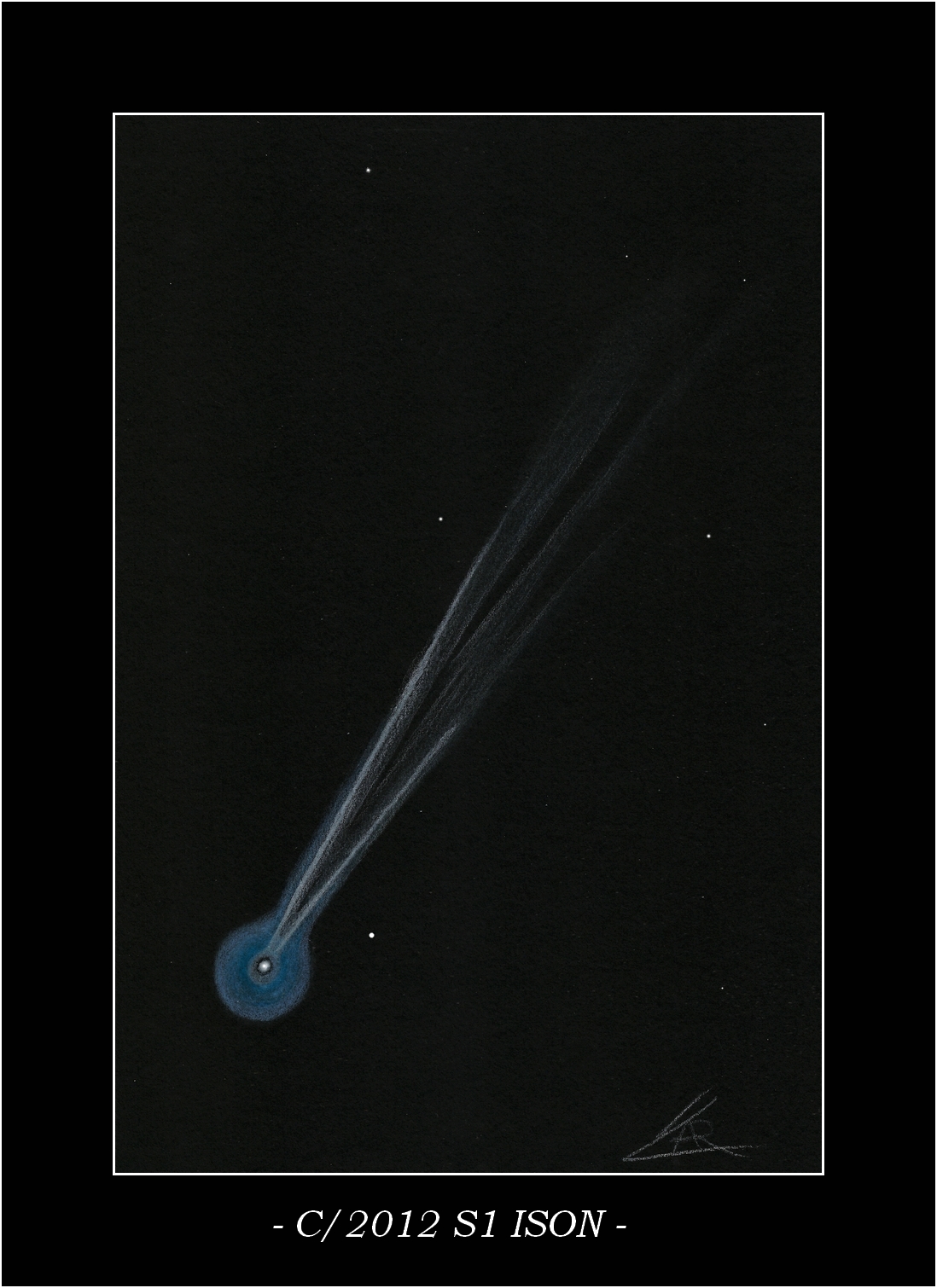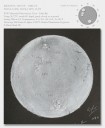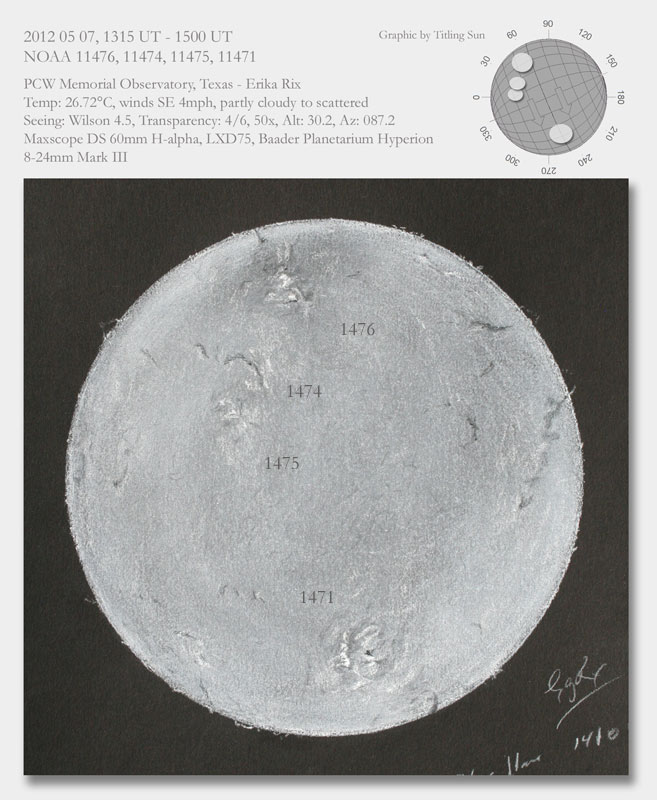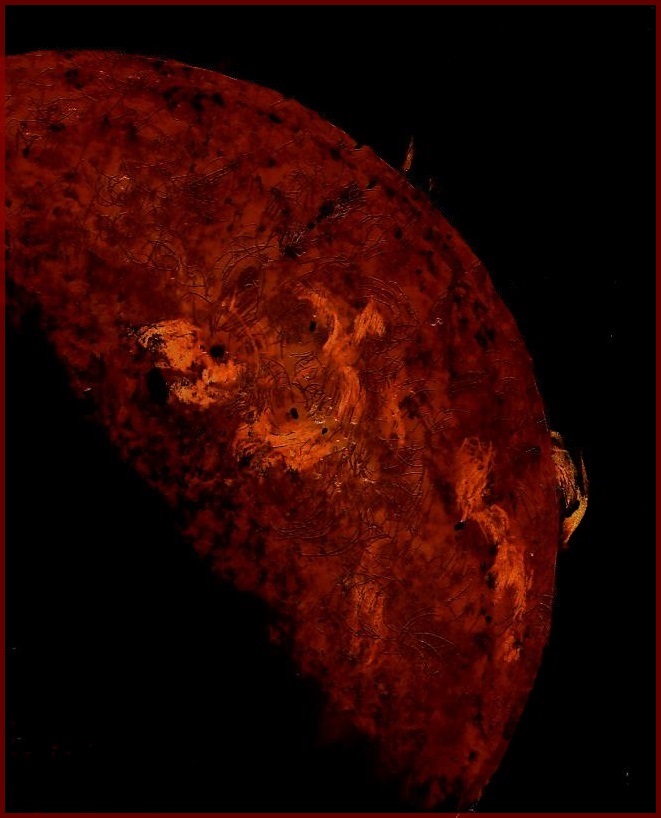
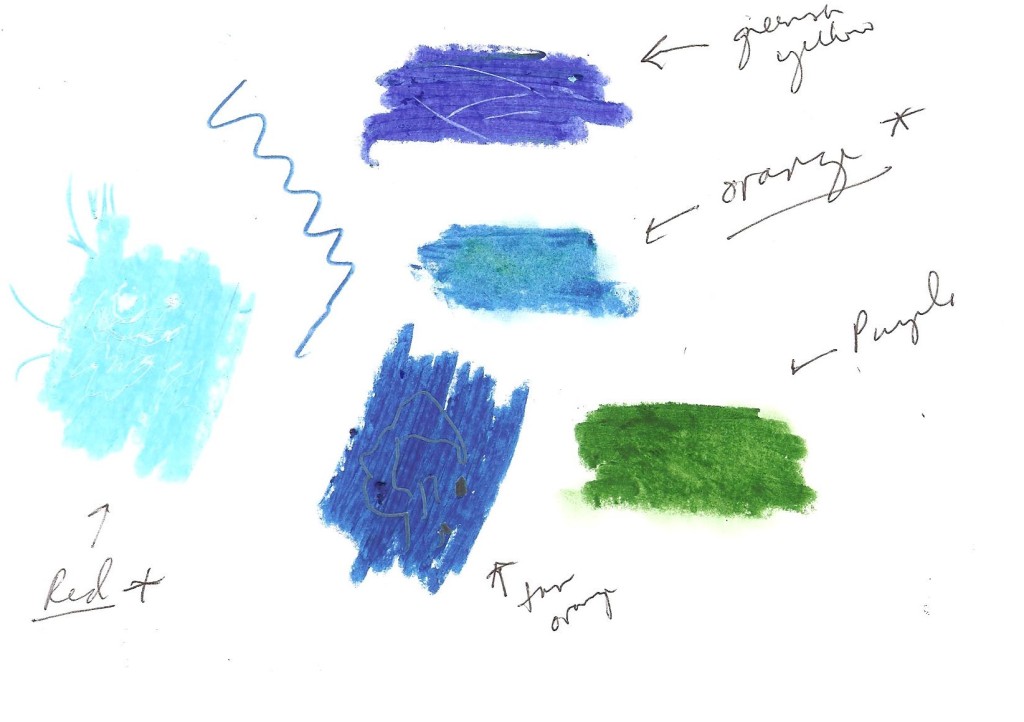
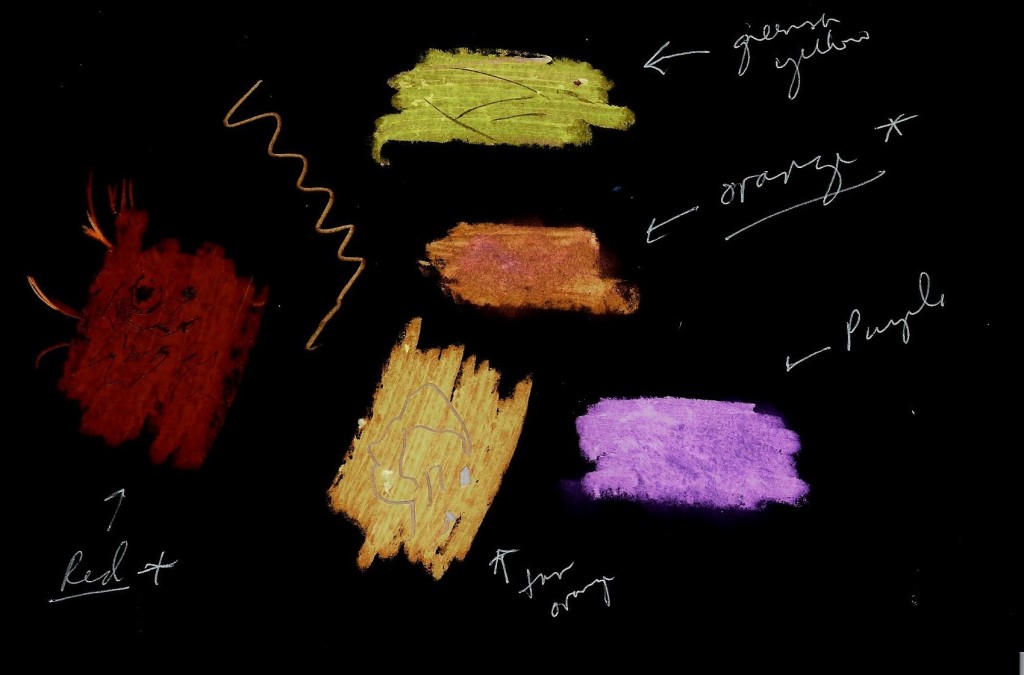
Aloha!
I was enjoying the Sun this morning and trying to decide how to represent the most prominent features. Sketching the Sun has just not gotten me the feeling that I can really represent it as well as I would like to as far as colorizing goes. I like using black paper but it isn’t smooth enough whereas plain white paper is. But when I have tried to add color later, it just loses what I see in the scope.
So today I tried a little something different. I like how some inverted blue colors really become the right colors for the Sun. So I put some oil pastel colors to paper & inverted to see what I could use. The nice thing about the oil pastel is I can scratch off small little lines to try to get the details of the solar surface. I had to think in negative to produce the sketch in order to preserve black, white and the different tones of red. This is my 1st attempt using this technique and I am not entirely happy with it but it is a bit of an experiment.
H-alpha Sun
5/9/14
60mm Lunt 88x
Oil Pastel, white permanent pen, white paper, Lyra polycolor pencils, a needle to scratch off the oil pastels to produce dark lines
Inverted with Photoscape software
Cindy (Thia) Krach
Maui. HI
